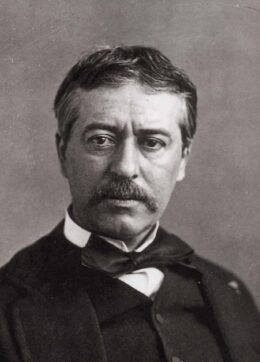
Printed
14 pages
Author(s)
Les Esprits frappeurs
In 1847, Maurice Sand – author George Sand’s son – began writing plays for puppets which he performed for his family and a few friends in Nohant (France).
The play Les Esprits frappeurs, also known as L’Oncle et le neveu, was performed in November 1871 in Nohant. It was published in Le Théâtre des marionnettes (1890), a work which gathered a small number of texts written for this theatre. A handwritten copy is kept in the Bibliothèque Historique de la Ville de Paris (Fonds Maurice Sand, H334).
Les Esprits frappeurs is a comedy in one act and seven scenes. It satirises bourgeois society. Balandard is a recurrent character in Maurice Sand’s comedies—he is an alter ego of the author.
Two men organise a fake occult ritual
The play is set in Cannes in 1871. Madame Palmer, her daughter Miss Kate (both Americans), Monsieur Balandard and his nephew Arthur, a young painter, are staying in a hotel. The young painter is in love with Miss Kate and paints her portrait. However, Miss Kate does not recognise herself in the painting and suggests, in Arthur’s face, that he find a “real” job. The young man is hurt: he draws a caricature of Miss Kate’s silhouette and complains to his uncle – Monsieur Balandard. Meanwhile, Madame Palmer organises an occult ritual with her daughter to find out the name of the daughter’s future husband. Cléophée, Madame Palmer’s occult “friend”, writes the name “Bal…”. From that moment on, Madame Palmer tries to arrange a marriage between her daughter and Monsieur Balandard. However, the uncle decides to help his nephew. To do so, he organises a fake occult ritual and hides Arthur inside a speaking bubble. In the end, the farce is revealed and faith in occultism is shattered.
Other titles
First performance
House of George Sand
Publications and translations
Maurice Sand, Le Théâtre des marionnettes. Paris: Calmann-Lévy, 1890
Maurice Sand, Le Théâtre des marionnette. Marseille: Jeanne Laffitte, 1999.
